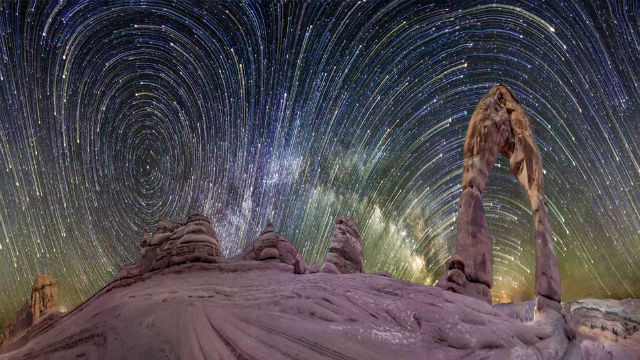The “Real” Carl Sagan

Did you watch “Cosmos” last night? The show was trending on Twitter during its broadcast, which is a good sign that television watchers crave shows that make them smarter. As we’ve reported here on Big Think, the return of “Cosmos” is sorely needed at a time when evolution vs. creationism is an actual debate.
While Neil deGrasse Tyson is doing an excellent job taking the torch from his mentor, we want to look back on, who was the real Carl Sagan? National Geographic answers that question in this must-read profile of the pioneering scientist.
It turns out that not only was Sagan a nurturing mentor who deeply cared about his students, he was also a big picture thinker who wasn’t afraid to go against the grain.
From National Geographic:
“He worked very hard, 18-hour days. He had a tremendous appetite for his work,” says [William] Poundstone, [author of Carl Sagan: A Life in the Cosmos]. “He was made for television, sure, and he looked very relaxed and normal in jeans when other scientists didn’t. But there was a lot more to him.”
As a scientist, Sagan made a real mark on planetary science in the early 1970s as a young Harvard professor, “at a time when planetary science was a bit of a backwater,” Poundstone says.
Sagan first predicted that the greenhouse effect made the atmosphere of Venus hot enough to melt lead, at a time when some scientists still speculated that its clouds might hide oceans, says Morrison.
Sagan also identified dark-shaded regions on Mars as highlands and identified lighter areas as desert plains marked by dust storms. Those storms later bedeviled NASA’s Mars Viking landers in the 1970s.
“He was a really great big-picture scientist, great with back-of-the envelope calculations, who could see the fundamental premises of science and observations,” says Morrison.
To gain more insight into this remarkable scientist, head over to National Geographic.





